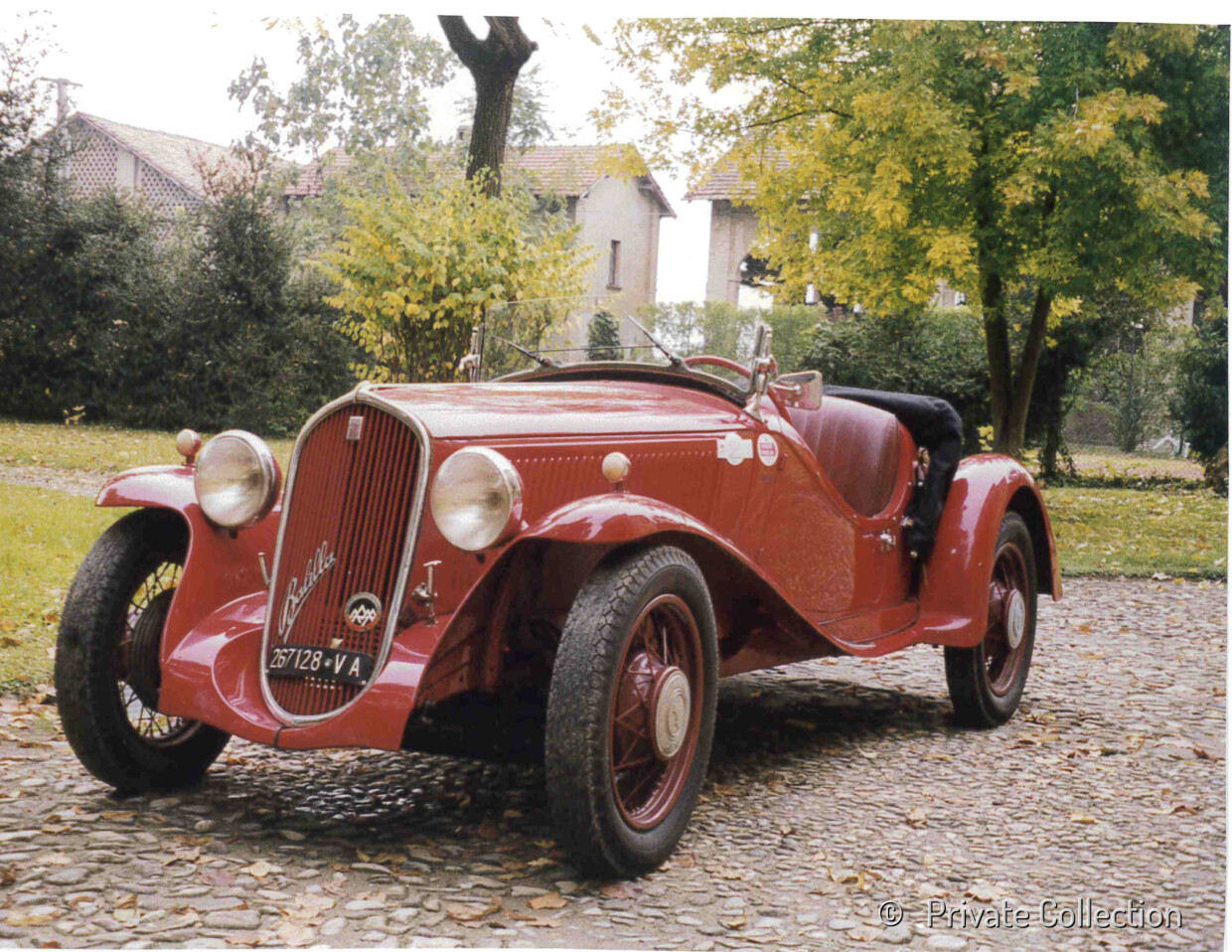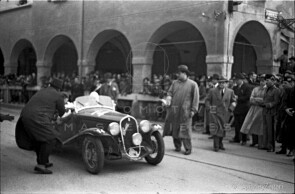
1935 Fiat 508 S Balilla Sport
ON/OFF
Why am I an Automotive Masterpiece?
Launched in 1932, the Fiat 508 Balilla quickly established itself as the car that put Italy on wheels. Developed under the technical direction of Tranquillo Zerbi, with contributions from Antonio Fessia and Dante Giacosa, the Balilla was designed to embody the regime’s ambition of creating an affordable national car. Its release aligned with the Fascist government’s push for modernization and industrial self-sufficiency, aiming to broaden access to mobility and reinforce national pride through Italian engineering. The car’s success stemmed from its low purchase price, modest operating costs, and ease of maintenance—key factors in a country still emerging from postwar economic hardship. Powered by a 995-cc inline four-cylinder side-valve engine producing around 20 hp, the Balilla offered adequate performance for its class. It featured a three-speed gearbox, rear-wheel drive, and a simple yet robust ladder-frame chassis with solid axles and leaf springs, prioritizing reliability and ease of repair. Compact, mechanically straightforward, and affordable, the Balilla became a cornerstone of Italian mass motorization. It was not only popular among private buyers, but also widely used in commercial and institutional roles—becoming a true icon of Fiat’s pre-war production and Italy’s automotive awakening.
The 508 S Balilla Sport, a competition version, was inspired by an original design by Carrozzeria Ghia. The first examples were built on the Fiat 508 Spyder chassis, suitably modified as “tipo corsa” (i.e. racing type), and still bore chassis numbers without the letter "S". In 1933, Fiat officially introduced the sporting version 508 S Balilla Sport, characterized by a lighter, elegant, and attractive body, which soon became a dream car for the younger generation. Fiat acquired the design rights from Ghia and produced two versions: the standard version, known as “Coppa d’Oro”, featured fully enclosed fenders, while the “Mille Miglia” version used lighter cycle fenders and a more lightweight chassis. The engine was also uprated from the standard 36 hp to 43 hp. The Coppa d’Oro version won the Coppa d’Oro del Littorio, from which it took its nickname, while the Mille Miglia version won the 1933 Mille Miglia in the up to 1100 cc Utility Class. Clothed in stylish open two-seater bodywork with a distinctive finned tail, the early "Spider Sport" models retained the crash gearbox of the standard cars but featured a special carburetor. Combined with a raised compression ratio of 7:1, this allowed for a maximum output of 30 hp at 4,000 rpm. In 1934, the second series 508 CS was introduced, improving on this successful formula. It adopted a four-speed synchromesh gearbox and an overhead-valve engine producing 46 hp. The final drive ratio was also modified, allowing for a top speed of 110 km/h. At the time, Siata was already producing accessories and performance parts for the Balilla, making it arguably one of the earliest car tuning companies in automotive history.
The Balilla Sport with chassis no. 508S071268 was registered first with Milano plates on April 4, 1935, to the famous racing driver Gigi Villoresi. It was just only ten days later, on April 14, that the car was entered at the Mille Miglia with race number #14. The Villoresi team (Gigi and Mimi) covered the distance among Brescia-Roma-Brescia in 17.15'26" gaining a very good 18th position overall and even a 2nd in class. It was the first of two red arrows for this car. In June, the car went abroad to race in Praga the 1000 Mil Ceskoslovenskych, organized by Autoklub Ceské republiky and inspired by the Italian homonymous race, again with the Villoresi couple who faced several other events of the 1935 season, the best results being a 1st in class at the Internationales Grossglockner Rennen in Lienz and at the Como-Lieto Colle. At the end of 1936 the car was purchased by another racing driver, Adolfo Caspani, who, too, undertook the Mille Miglia with race number #45. But his race in 1937 was less successful: he set a good time up to Rome and was then forced to withdraw. The car was sold to Carlo Croff, of the well-known Milanese entrepreneurial dynasty, specialized in furnishing fabrics, curtains and carpets and then passed on to his heirs. From 1947 to 1991, a series of passionate owners followed, always traced. After being restored, from 1991 the car becomes a property of Count Giuseppe Cavagna di Gualdana, entrepreneur and former president of Confagricoltura Pavia and vice president of Confagricoltura Lombardia. The count takes the Balilla to three re-enactments of the Mille Miglia, from 1992 to 1994, always arriving at the end and in honorable positions. The cas has been published on the Mille Miglia’sChassis book, volume III and is now part of a private collection.





